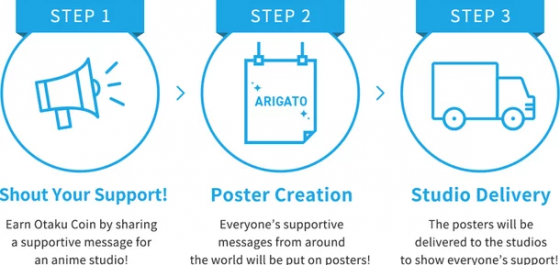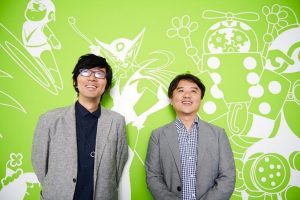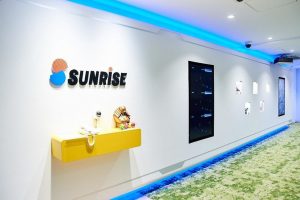
BEING THE MAIN PRODUCER OF THE TITLES LAND OF THE LUSTROUS AND MONSTER STRIKE THE MOVIE: SORA NO KANATA WAS A BIG CHALLENGE FOR THE STUDIO.
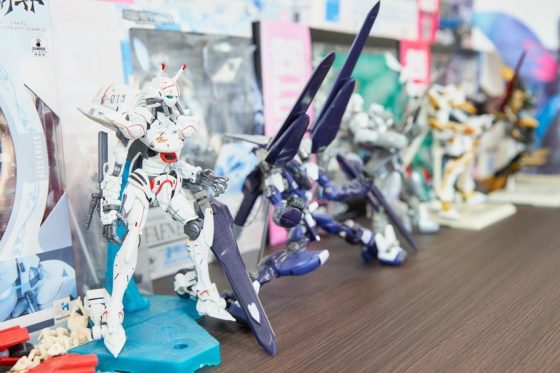
A LINE-UP OF KNIGHTMARE FRAMES FROM CODE GEASS: AKITO THE EXILED, WHICH THEY PRODUCED USING CGI.
What You Need to Know:
- Tokyo Otaku Mode is back at it again with more exclusive animation studio interviews, and we have the honor of sharing it all with you! Orange is a CGI production studio with the motto of creating high-quality CGI after understanding the audience’s point of view.
- The founder, Eiji Inomoto, has been working in CGI production since he became a freelance anime director, and is one of the pioneers of Japanese CGI animation. He has worked as a director on many CGI works, such as Genesis of Aquarion and .hack//Quantum, and his work has been lauded as CGI that can blend in with cel animation. However, he says that the animation that he wants to make at Orange doesn’t end there.
- Land of the Lustrous (hereafter Lustrous) was created with that in mind, and as a result, that title earned high praise both within and outside of Japan and has become one of Orange’s best-known works.
- TOM's own sat Minako Nakamura down with CEO Eiji Inomoto and producer Kiyotaka Waki to discuss Orange’s past, future, and how it will continue to evolve past Lustrous. Be sure to subscribe to TOM!
Source: Official Press Release
The Fixation on Animation That Can Only Be Made With CGI
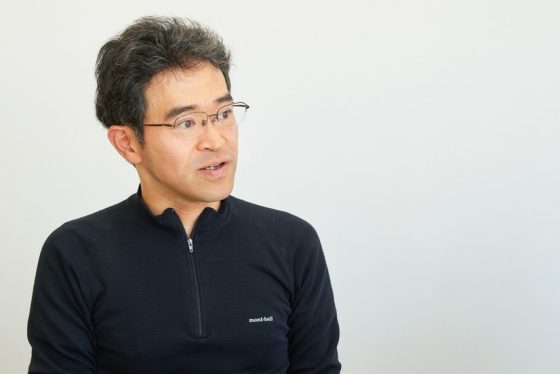
EIJI INOMOTO
Tokyo Otaku Mode: Mr. Inomoto, Orange was founded as a CGI animation studio in May 2004. What prompted you to open the studio?
Inomoto (hereafter I): I had worked freelance in 3D CGI animation for about ten years before then. Some of my TV work includes Zoids: Chaotic Century(1999 - 2000). I did the CGI on Geneshaft (2001) almost entirely by myself. It was an impossible amount of work and it made me learn my personal limit.
After that, I worked on Ghost in the Shell: Stand Alone Complex (2002 - 2004), and when the time for Genesis of Aquarion (2005) came, I wanted to do it in a group, even if it was just a few people, so I opened the studio.
It was right around that time when the trends meant that CGI = robot anime, so there were a lot of fighting scenes that increased the amount of labor in production, too.
I felt like we needed to reduce the amount of labor or else making anime in the future would become quite difficult.
On the other hand, I felt like mecha anime were increasingly becoming made with CGI. At the time, mecha were still mostly hand-drawn, but the production companies were worried about how people who could draw mecha were dwindling, so I thought it could become a business.
Tokyo Otaku Mode: You had the foresight to become involved in Japanese CGI animation from its beginnings, but what did you have in mind when you opened the studio?
I: I wanted to place importance on quality, as well as to establish a proper place for CGI production in the industry. This is still true today, but I felt rebellious against the idea that we as a company would just turn the artist’s storyboard into CGI as-is.
Of course, there are plenty of points that we should refer to when we look at an artist’s 2D art. However, following the 2D art precisely is dangerous because it ruins the CGI.
CGI and 2D art are different. 2D animation techniques cannot be used as-is for CGI and you cannot recreate CGI animation on paper, either. However, since CGI production was just beginning to be used for animation, different companies used different techniques to create cuts. Since the clients didn’t know much about CGI, even if we offered various suggestions on how to do things, it was difficult for them to understand our opinions.
In the end, we have to mimic 2D animation techniques, but using it will end up with cuts that kill the special characteristics of CGI. I don’t really want to do that. That’s why I add action and acting as much as I’m allowed. I don’t think there are any titles of mine that were done exactly as I was told (laughs).
The Altered Production System of Land of the Lustrous
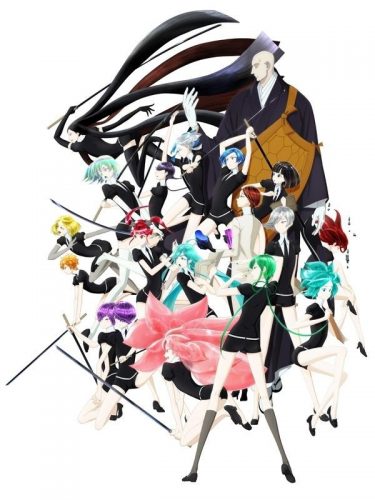
(C) 2017 ICHIKAWA HARUKO, KODANSHA / LAND OF THE LUSTROUS PRODUCTION COMMITTEE
Tokyo Otaku Mode: Have there been any difficulties as the company has gotten bigger?
I: We were always hired as subcontractors until Lustrous, so as the number of orders increases, so do the materials and manpower needed. In order to handle that, we needed more people, so it became harder than when we were a small team.
We reached our physical limit for being able to continue working as a subcontractor, and that was when we were lucky enough to be offered Lustrous. We decided to try being the prime contract, or the main producers, on it. That means we crossed the most dangerous bridge right before we started producing Lustrous.
Waki (hereon W): I was brought on for Lustrous, so that was right when I entered the company. At the time, subcontract work was our main business, so I was involved in more than ten titles.
Even if we didn’t know who was in charge of what title, there was work to turn in every day and video editing every week, so it really would have been difficult to keep going like that.
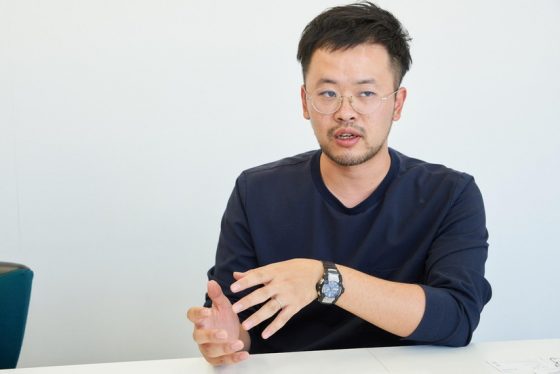
KIYOTAKA WAKI
Tokyo Otaku Mode: As a producer, what did you do to change that difficult production situation?
W: There were about 70 people on the staff at the time, but they were all CGI animators and modelers, so we had to gather the necessary staff to do prime contract work. Then it was the schedule. This is still true, but in Japan, there are few TV series made with CGI animation and the production methods aren’t standardized through the industry. So, as we were taught various CGI production companies about the production systems, we thought about which system we would implement at Orange and made it a reality.
Right now, Orange has 50 animators and 15 modelers, as well as 2D artists, cinematographers, and other production staff that joined us after Lustrous. When we were working on that title I was the only producer, but after that, we hired three more and they’re all in charge of their own titles.
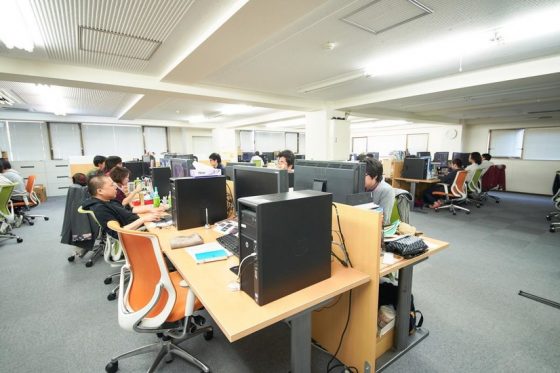
A SHOT OF THE STUDIO. IN THE FRONT ARE MODELERS AND THE ANIMATION TEAM IS IN THE BACK.
Tokyo Otaku Mode: I think staff training is an important part of growing the studio. What do you normally do to train staff?
W: Animation cannot be made solely by CGI creators. I believe that having creators that work in media other than CGI come in and have our staff show them how each different section works is one way of training them and changing their way of thinking. I work hard to create situations where people from different sections can interact easily.
For example, when we’re having main meetings, we have the staff involved on that title participate. Before then, there were few opportunities for the artistic and CGI teams to meet, but now that they understand each other’s tasks and have discussions, our production methods have changed.
Similarly, when we have colorists and modelers discuss, the characters’ colorings change, too. I believe making a place where those sorts of discussions can occur is connected to growth.
Tokyo Otaku Mode: By understanding everyone’s tasks, it creates the foundation for high-quality animation and new methods of expression. On a technical level, do you do things like having study sessions or teaching your staff about the latest information?
I: Of course I want my staff to improve, but for that to happen, we need an environment where they can train for a long time and improve their skills. On the other hand, the industry is set up so that it’s only natural to change jobs multiple times in the pursuit of knowledge.
This is just my personal opinion, but I believe both the anime and CGI industries are worlds with no goal, even if you keep training for decades, because there’s so much to do within them.
That’s exactly why I think staying put in one place and slowly but surely working on your techniques will improve your ability and mental fortitude and will lead to the creation of good titles. As a CEO, it’s my dream to have more staff members who agree with that.
However, it’s still difficult. We’re working hard through trial and error to improve our benefits and create reasonable working conditions for an environment that’s easy to work in.
Creating High-Quality Hybrid Images with the Merits of Both 2D Art and 3D CGI
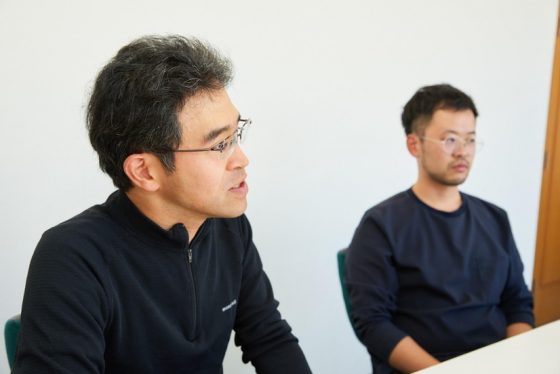
Tokyo Otaku Mode: The CGI images created by Orange are known for their appearances that can fit right in with 2D art. I think that’s because of all the trial and error that Mr. Inomoto has personally gone through during his career, but was your goal to create CGI that blends in with 2D animation from the beginning?
I: That wasn’t a top priority for me. It was necessary to make the audience watch, so it is something that I have done.
It’s really easy to create unpleasant-looking parts when you mix CGI and 2D art, which is why I focused on having the art blend in together. In doing that, there was the path to make it blend in even further with 2D animation, but I diverged from that and took the stance of having it blend in but letting the CGI artist do what they want after a certain point. I believe that’s really evident in Lustrous.
The characters of Lustrous have hair like jewels, so texture could only be created with CGI, but on the other hand, we made the skin on their faces look more like 2D art. We did that because in modern Japanese animation, if we make the faces look like CGI, then the audience can’t empathize with the characters. That’s why we still need 2D artists.
However, there’s the possibility that even 5 or 6 years ago, the audience wouldn’t have accepted how the hair in Lustrous looks, either. For example, in the 3rd episode called Metamorphose, Ventricosus (a snail) appears. We made it look realistic, but a few years ago, it would look so fake that it wouldn’t have been watchable.
Tokyo Otaku Mode: As a CGI production company, it’s very important to decide what visual style to use. While the rest of the world is moving towards photorealism, Japan is actually producing a lot of CGI that’s a hybrid with 2D art. What about Orange?
I: Regarding visual style, I’ve always thought that it’s more important to prioritize the audience rather than what we, the producers, want. The modern audience sees CGI not just through anime but also in movies and games, so they’ve gotten more used to CGI, leading to a wider tolerance. Thus, we’re always looking at audience reactions and toeing the line of what’s acceptable while slowly inserting new things to create visuals that are just a little bit aggressively CGI.
That’s why I think that Lustrous is very much a product of this transition period.
Other production companies are also groping around with the line of CGI that audiences will be okay with.
Right now, the younger generation is seeing characters with anime-style looks but with CGI textures singing and dancing in games. For some reason, there’s no problem when they’re just singing and dancing, but when feelings and a story are added, the audience reaches the uncanny valley.
However, as people get used to seeing CGI used for singing and dancing, there might come a generation that will see anime produced with the modern level of CGI, so we’ll have to keep working while touching base with the audience.
Tokyo Otaku Mode: Mr. Waki, as a producer, do you think that the production style of prioritizing the audience for the appearance but including new expression styles is the stance that the whole company is taking?
W: Yes. Having our CEO be an animator and a director himself is one of Orange’s biggest characteristics. The idea of creating as the most important thing is ingrained in the company as common knowledge among all the employees.
We Love Seeing Direct Feedback from the Internet
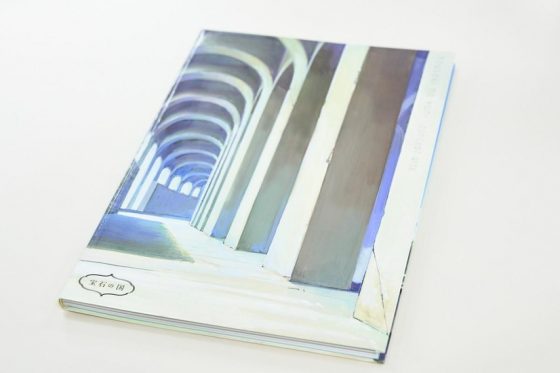
THE LAND OF THE LUSTROUS CONCEPT ARTBOOK, NOW ON SALE ON ORANGE’S OFFICIAL SITE.
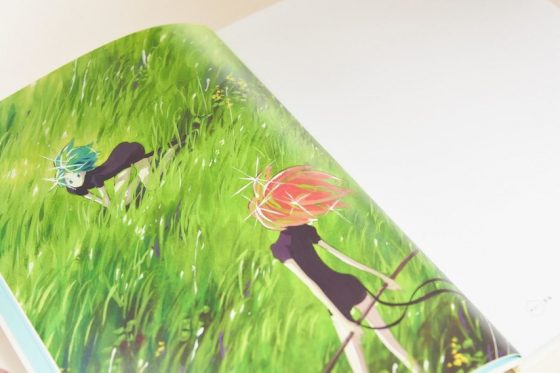
IT INCLUDES ABOUT 80 PIECES OF CONCEPT ART AS WELL AS SPECIAL INTERVIEWS.
Tokyo Otaku Mode: Land of the Lustrous earned high reviews from an artistic point of view, but what else did you earn from becoming a prime contractor?
I: Lustrous became Orange’s best-known work. I personally feel a sense of accomplishment and I’m very happy that more people than I imagined now know Orange because of it. I used to get criticized for making titles using CGI, but we didn’t get any of that for Lustrous. I’m very happy about that.
Tokyo Otaku Mode: Have you found your next challenge yet?
I: It’s using CGI to make characters act with their faces. When it’s drawn in 2D art by a person, there’s incredible flexibility in expressions, but CGI doesn’t have that flexibility yet so characters end up looking like dolls.
When we were working on Lustrous, we thought hard about how to make the characters seem soft and natural. We ended up taking 2 years to create a unique system where we can put a 2D mouth on a 3D face.
While Lustrous ended up pretty nice, it’s not perfect yet. I want to increase the possibilities of CGI by including more 2D-like, flexible CGI into my future titles and making various expressions possible using CGI animation.
In order to expand the genre of our titles, we tried our hand at Monster Strike The Movie: Sora no Kanata (hereafter Monster Strike). We were the prime contractor, so we hoped that the experience of working on it would show us how much energy is needed so we could create a new system for our future titles.
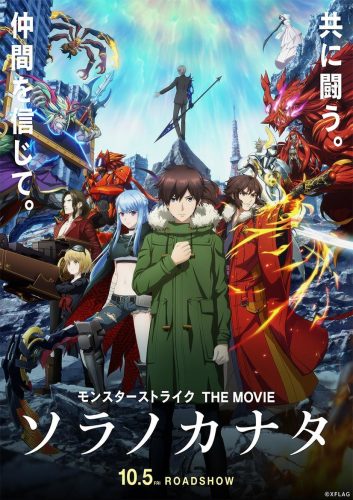
(C)XFLAG
W: Monster Strike was a title where young animators had a lot of responsibility, so it was a good chance for our staff to work on their abilities.
Tokyo Otaku Mode: What do you aim for in Orange’s future visuals?
I: We’re currently thinking about how to make titles that can’t be made using current methods of expression. From a technical point of view, we used motion capture on Lustrous, which was something I’ve wanted to do since I was freelance. Next I want to use facial capture properly in anime.

THIS IS THE MOTION CAPTURE STUDIO INSIDE ORANGE. IT’S RARE FOR AN ANIME PRODUCTION COMPANY TO HAVE ONE.
We’re also in the middle of programming Unity, a real-time rendering program, though Toei Animation already beat us to the punch. We’re exploring various options in finding interesting ways of expression by bringing in new techniques.
Plus, our biggest goal is to create a visual representation that will be Orange’s special characteristic that it’s known for. To reach that, we’d like to get good tips and know-how from overseas studios and mix it well with Japanese methods.
Tokyo Otaku Mode: Finally, is there a particular way you’d like international fans to support you?
I: I went to anime events overseas for Lustrous. When we screened footage, I was really encouraged by the audience’s audible reaction. Also, I was really happy by the huge response it got as it aired, as it would be included in the trending topics on social media like Twitter. If they’d like to support us, asking for a second season on the internet is one way to motivate us.
W: As far as Orange is concerned, Lustrous was our first title and Monster Strike our second. We want to be a company that continues to make high-quality titles and shows the audience something new every time, so please continue to support us.
I: Please look at Orange as a slightly clumsy kid with a great personality. When we’re trying new things, we might put some stuff in that the audience might hate, but please watch our titles not for a sense of security but because you can’t predict what we’re going to do next.
Subscribe to TOM and Otaku Coin!
Be sure to support Otaku Coin, a community currency that Anime! Anime! is also a partner company in planning. Join in on supporting the anime studios after downloading the app.
